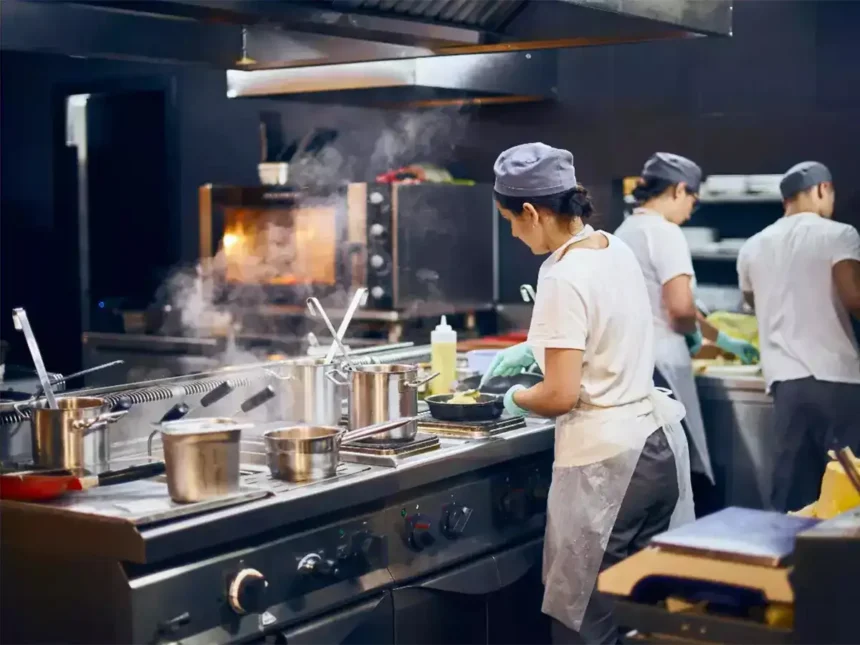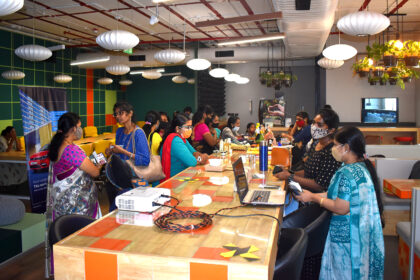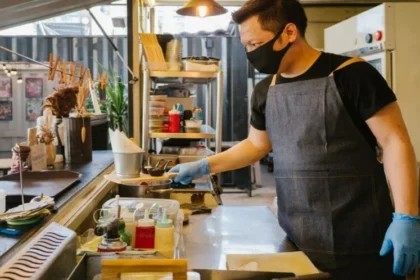Starting a cloud kitchen in India has emerged as a highly promising business opportunity, especially in the wake of increasing demand for food delivery. With lower capital requirements compared to traditional restaurants and a scalable business model, cloud kitchens are ideal for budding entrepreneurs, chefs, and food enthusiasts.
This comprehensive guide breaks down the exact costs involved in starting a cloud kitchen in India in 2025. From setup expenses and monthly operational costs to licensing requirements and profitability analysis, this article will provide you with the clarity needed to make informed decisions.
What is a cloud kitchen?

A cloud kitchen, also referred to as a ghost kitchen or dark kitchen, is a delivery-only restaurant model. These kitchens operate without a dine-in facility and fulfill online food orders through delivery apps like Zomato, Swiggy, or direct website orders.
This concept allows entrepreneurs to launch food brands at a lower cost, with flexibility in operations and minimal staffing requirements.
Total Startup Cost for a Cloud Kitchen in India (2025)
Below is a detailed breakdown of the estimated initial investment required to start a cloud kitchen:
| Expense Category | Estimated Cost Range (INR) | Details |
| Kitchen Space Rent (per month) | 20,000 – 50,000 | Rent for a small 200–300 sq. ft. commercial space |
| Kitchen Equipment | 1,00,000 – 3,00,000 | Cooking range, tandoor, ovens, refrigerators, storage |
| Licenses & Registrations | 20,000 – 40,000 | FSSAI, GST, fire NOC, trade license, etc. |
| Initial Inventory (Raw Materials) | 25,000 – 50,000 | Ingredients and packaging stock for the first 2 weeks |
| Staff Salaries (2-3 members) | 40,000 – 70,000 | Basic kitchen staff and a supervisor |
| Branding & Packaging | 20,000 – 50,000 | Logo design, packaging materials, labels |
| POS System & Billing Software | 5,000 – 15,000 | POS subscription or software license |
| Online Platform Registration | 10,000 – 20,000 | Listing fees and commissions on Swiggy, Zomato, etc. |
| Initial Marketing & Advertising | 20,000 – 50,000 | Influencer marketing, social media, digital ads |
| Miscellaneous/Buffer Fund | 20,000 | Unforeseen costs and utilities |
| Total Estimated Cost | 2,80,000 – 6,60,000 INR | For a small to mid-sized cloud kitchen |
Monthly Operating Costs
Once your kitchen is up and running, these are the typical recurring expenses you can expect every month:
| Monthly Expense | Estimated Range (INR) |
| Kitchen Rent | 20,000 – 50,000 |
| Staff Salaries | 40,000 – 70,000 |
| Raw Materials & Packaging | 40,000 – 60,000 |
| Utilities (Electricity, Gas, Water) | 8,000 – 15,000 |
| Commissions to Aggregators | 20,000 – 50,000 |
| Marketing & Promotions | 10,000 – 25,000 |
| Maintenance & Miscellaneous | 5,000 – 10,000 |
| Total Monthly Cost | 1,43,000 – 2,80,000 INR |
Your actual monthly cost will depend on the size of your operation, city, and order volume.
Cost-Saving Tips for First-Time Cloud Kitchen Owners

Here are a few strategies to reduce your initial investment and manage costs effectively:
- Start with a Limited Menu: Focus on a few items that are easy to prepare, high in demand, and profitable.
- Buy Pre-owned Equipment: Look for used or refurbished kitchen equipment from closing restaurants.
- Leverage Shared Kitchen Spaces: Rent a slot in a commissary kitchen or cloud kitchen hub to avoid full rental expenses.
- Use Free or Low-Cost Marketing Tools: Promote your brand through social media, WhatsApp groups, and community partnerships.
- Negotiate Vendor Contracts: Compare multiple suppliers for raw materials to get the best rates.
Mandatory Licenses and Registrations
To operate a cloud kitchen legally in India, the following licenses are essential:
| License/Registration | Approximate Cost (INR) | Where to Apply |
| FSSAI License (Central/State) | 5,000 – 15,000 | foscos.fssai.gov.in |
| Shop & Establishment Act License | 1,000 – 5,000 | Local Municipal Body |
| Trade License | 5,000 – 10,000 | Local Authority (Municipal Corporation) |
| GST Registration | Free (Professional Fees Applicable) | gst.gov.in |
| Fire Safety NOC | Depends on size, usually free for small kitchens | Fire Department |
Make sure all your documents (rent agreement, identity proofs, NOC, kitchen layout, etc.) are in place before applying.
Revenue and Profitability Potential
A cloud kitchen, if executed well, can break even within 6 to 9 months.
Example Calculation:
- Average Daily Orders: 30
- Average Order Value (AOV): ₹200
- Monthly Revenue: 30 x 200 x 30 = ₹1,80,000
- Gross Margin: 60% (₹1,08,000)
- After Fixed Expenses: ₹20,000 – ₹40,000 net profit (depending on location and commission)
Note: Direct orders via your website or WhatsApp can help avoid aggregator commissions and increase profitability.
Business Models You Can Explore

- Single Brand Cloud Kitchen: One cuisine or food concept from a single kitchen.
- Multi-brand Cloud Kitchen: Multiple virtual brands running from the same kitchen space.
- Franchise-based Model: Operate a proven brand through franchise.
- Aggregator-Only Model: Sell exclusively on platforms like Swiggy and Zomato.
- D2C Focused Kitchen: Take direct orders through your website or social media.
Common Mistakes to Avoid
- Ignoring food costs and pricing strategy.
- Relying only on Swiggy/Zomato for orders.
- Over-investing in branding without testing.
- Not setting up proper hygiene and safety standards.
- Poor delivery time management leading to negative reviews.
Frequently Asked Questions About Cloud Kitchen Startup Cost
Can I start a cloud kitchen from my home? Yes, but only if your home kitchen meets FSSAI norms and local zoning laws permit commercial food production.
Is it possible to get funding for cloud kitchens? Yes. Angel investors, seed funds, and startup accelerators invest in profitable food brands, especially in urban areas.
How long does it take to set up a cloud kitchen? Typically 3 to 6 weeks, depending on location, license approvals, and vendor availability.
Can I start alone without hiring staff? Yes, solo operations are possible for very small-scale kitchens or home chefs using platforms like Magicpin, DotPe, etc.
Final Thoughts
Cloud kitchens are a smart entry point into the food industry, especially in 2025 where demand for doorstep delivery continues to rise across India.
With the right planning, a well-structured cost model, and lean operations, your kitchen can scale profitably. The key lies in understanding your audience, maintaining quality, and leveraging technology.
About Startup Shorts
Startup Shorts brings practical business guides, step-by-step breakdowns, and real-world startup insights for Indian entrepreneurs. From food and retail to SaaS and service businesses, we help you get started smartly.












